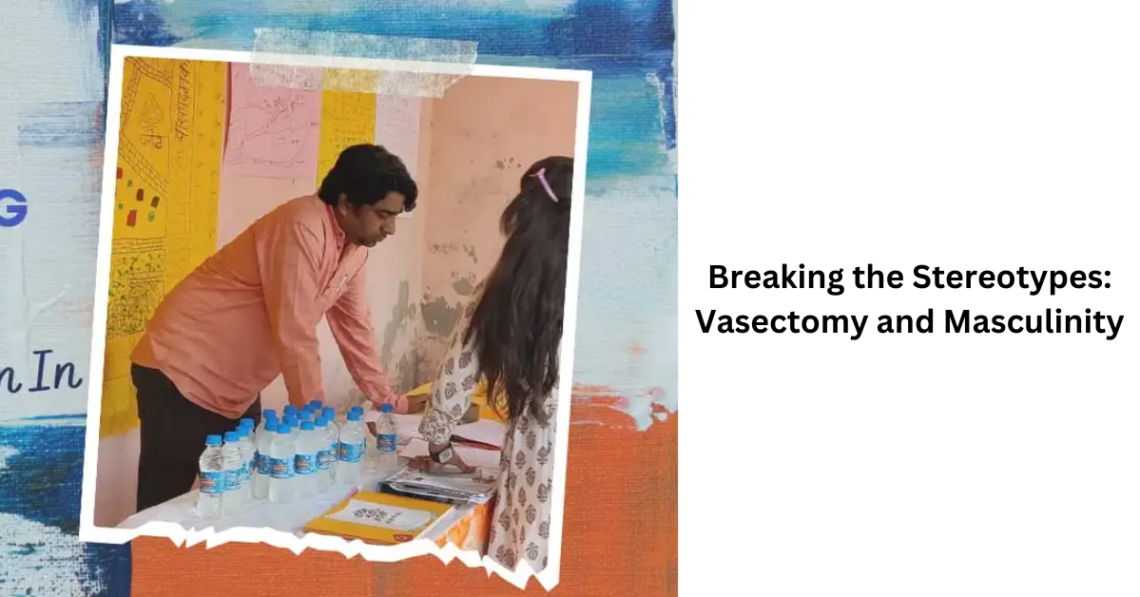
Breaking the Stereotypes: Vasectomy and Masculinity
Vasectomy—a surgical procedure for male sterilization—has long been a subject surrounded by myths, misconceptions, and societal taboos. Often perceived as emasculating or symbolically diminishing one’s masculinity, vasectomy remains a misunderstood aspect of men’s reproductive health.
In this blog, we’ll challenge these stereotypes head-on and explore the reality of vasectomy, debunking myths, addressing concerns, and highlighting its role in empowering men to take control of their reproductive choices.
Key to this discussion is the question that often looms large: is a vasectomy painful? Let’s delve deeper into this topic and unravel the truths behind vasectomy and masculinity.
Understanding Vasectomy: What is it and How Does it Work?
Before delving into the intersection of vasectomy and masculinity, let’s first understand what a vasectomy entails. Simply put, a vasectomy is a surgical procedure performed on males as a means of permanent contraception.
During the procedure, the vas deferens—the tubes that carry sperm from the testicles to the urethra—are cut, sealed, or blocked, preventing sperm from reaching the semen ejaculated from the penis. This effectively renders the individual sterile, eliminating the risk of unintended pregnancy.
Debunking Myths and Misconceptions
One of the primary barriers to vasectomy acceptance is the prevalence of myths and misconceptions surrounding the procedure. These misconceptions often stem from outdated beliefs about masculinity, fertility, and sexual health. Let’s address some common myths and debunk them with facts:
1. Myth: Vasectomy is emasculating or diminishes masculinity.
● Fact: Vasectomy has no bearing on a man’s masculinity or virility. It is simply a method of birth control and does not affect sexual function, libido, or the ability to ejaculate.
2. Myth: Vasectomy is extremely painful.
● Fact: While discomfort during and after the procedure is normal, modern vasectomy techniques have significantly reduced pain and recovery time. With the use of local anesthesia and minimally invasive procedures, many men report minimal discomfort during the process.
3. Myth: Vasectomy is irreversible.
● Fact: While vasectomy is intended to be a permanent form of contraception, it is possible to reverse the procedure through vasectomy reversal surgery. However, reversal success rates vary, and it’s important to consider vasectomy as a permanent decision.
4. Myth: Vasectomy affects sexual pleasure or performance.
● Fact: Vasectomy does not impact sexual pleasure or performance. Once fully recovered, men typically experience no changes in sexual function or sensation.
Is a Vasectomy Painful? Understanding the Procedure and Recovery
Now let’s address the central question: Is a vasectomy painful? The answer may vary depending on individual pain tolerance, the specific technique used, and the skill of the healthcare provider performing the procedure.
However, it’s important to note that advancements in medical technology and techniques have made vasectomy a relatively low-pain procedure for many men.
During a vasectomy, local anesthesia is typically administered to numb the area, minimizing discomfort during the surgery.
The procedure itself involves making small incisions in the scrotum to access the vas deferens, which are then cut, sealed, or blocked. While some men may experience mild discomfort or a sensation of pressure during the procedure, the majority report minimal pain.
After the procedure, it’s normal to experience some soreness, swelling, and bruising in the scrotal area.
However, these symptoms are usually mild and can be managed with over-the-counter pain medication and icing the area. Most men are able to resume normal activities within a few days to a week following vasectomy, with full recovery typically achieved within a few weeks.
It’s essential for men considering vasectomy to discuss any concerns or questions about pain management with their healthcare provider. Open communication and informed decision-making are key to ensuring a positive vasectomy experience and successful outcomes.
Empowering Men: Vasectomy as a Choice
Vasectomy is not just a means of contraception; it’s a choice that empowers men to take control of their reproductive futures. By opting for vasectomy, men can actively participate in family planning decisions, share responsibility for contraception, and alleviate the burden on their partners.
Furthermore, vasectomy offers numerous advantages over other forms of birth control, such as its high efficacy rate, permanence, cost-effectiveness, and lack of hormonal side effects.
For couples who have completed their desired family size or wish to avoid the risks and inconveniences associated with other contraceptive methods, vasectomy can offer peace of mind and freedom from worries about unintended pregnancy.
In addition to its practical benefits, vasectomy also holds symbolic significance in challenging traditional gender roles and stereotypes.
By embracing vasectomy as a legitimate choice for family planning, men can redefine notions of masculinity, sexuality, and fatherhood, breaking free from outdated expectations and embracing a more egalitarian approach to reproductive health.
Redefining Masculinity Through Vasectomy
Vasectomy is a safe, effective, and relatively painless procedure that offers men a reliable form of contraception and greater control over their reproductive choices. By dispelling myths, addressing concerns, and promoting informed decision-making, we can empower men to embrace vasectomy as a positive and proactive step towards family planning.
Moreover, by challenging stereotypes and redefining masculinity in the context of reproductive health, we can foster a culture of inclusivity, support, and acceptance. Vasectomy is not a threat to masculinity; rather, it is a testament to the strength, responsibility, and agency of men in shaping their own futures and contributing to the well-being of their families and communities.
Let’s break the stereotypes, embrace diversity, and celebrate the power of choice—because masculinity is not defined by reproductive capacity, but by the courage to make informed decisions that align with one’s values and aspirations.
You May Also Like

A Magical Wonderland for Every Shop Disney In 2023
August 10, 2023
5120x1440p 329 frisbee backgrounds
June 22, 2023

